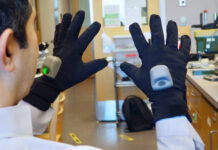When most students start to learn about physics, they start with the physics that is simple to observe with experiments that can easily be done by anywhere. It could be something as simple as dropping a ball and observing how it accelerates towards the ground, or throwing a ball and measuring how its position changes over time.
This intuitive kind of physics is called classical mechanics. But getting down to quantum mechanics requires us to accept properties we can’t see with just our eyes, says Alannah Hallas, assistant professor of physics and astronomy at the University of British Columbia’s Stewart Blusson Quantum Matter Institute.
“There isn’t anything that you can see with your naked eye that tells you that quantum mechanics is true,” says Hallas. “There’s this leap that you have to make of just accepting that that’s the way the universe is, and we have to develop a lot of very special tools to study the quantum properties of materials.”
One of the challenges that Hallas has embraced is the idea that defects and disorder can be used to design materials with new properties.
“There is no such thing as an absolutely perfect material,” says Hallas. “Every material has some level of defects and disorder.”
While defects and imperfections are unavoidable, at small concentrations they can still have a significant impact on a material’s performance. But Hallas wants to know what might happen if defects were a purposeful design feature of materials, intentionally added at high concentrations.
“Instead of disorder being something that’s hampering our understanding of the material, it’s something that’s actually causing the property that we’re interested in,” explains Hallas.
These intentionally disordered materials are improving the performance of lithium ion batteries, providing new ideas for high-temperature superconductors, and producing superior catalysts.
“There’s lots of different lenses on that problem, but the one that I’m interested in is a class of materials known as high-entropy oxides,” adds Hallas.
“They’re very new, and this is a class of materials where we’re actually mixing together five different chemical elements into one material and they’re completely randomly distributed, so it’s about as disordered as you could imagine a material being, but they do really interesting things. They do things that are completely different than any of those one elements in isolation.”
Observing quantum mechanics may not be as easy as throwing a ball, but it’s leading to advances in material design that will impact everyday lives by shifting paradigms. This project flips the idea of flaws on its head and makes defects a core design feature, creating something completely unexpected.






































